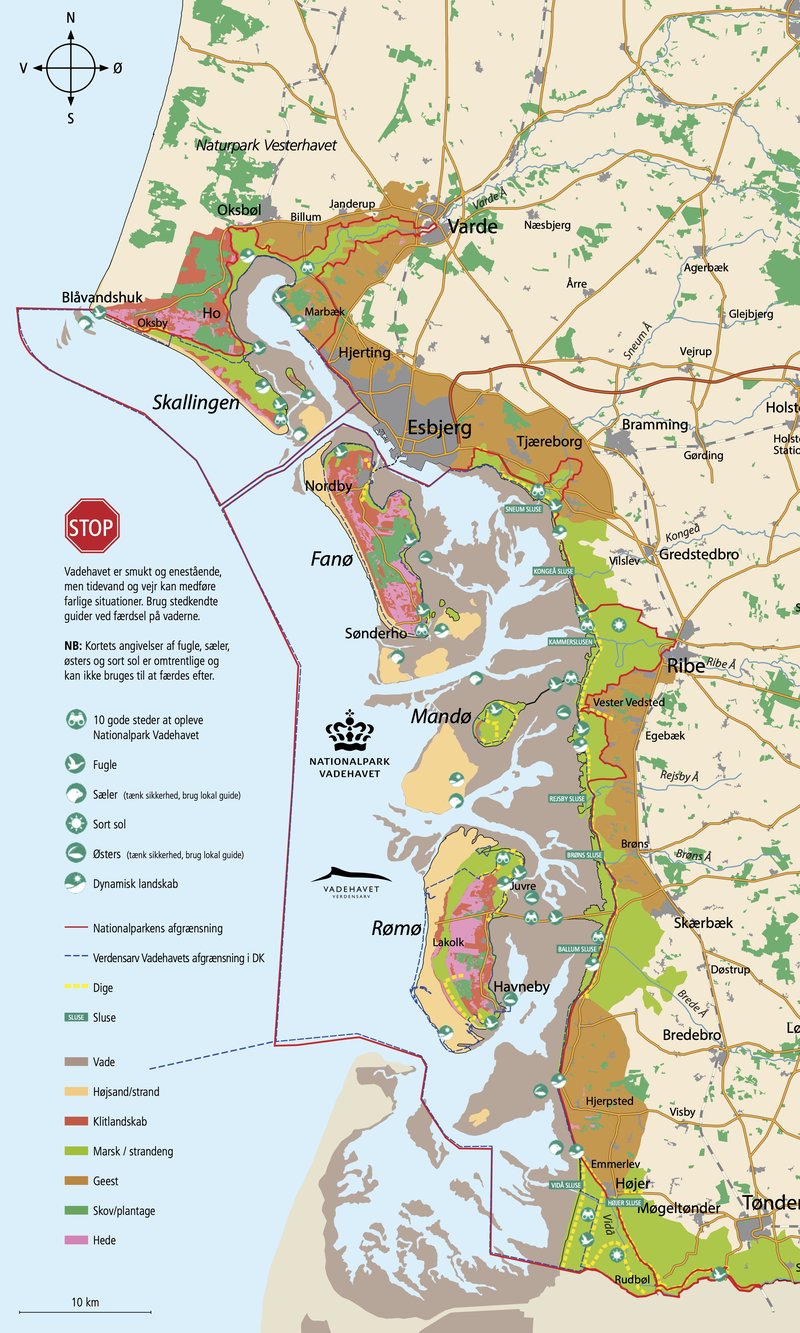Walking barefoot on the Vadehavet
- Jan. 27, 2021
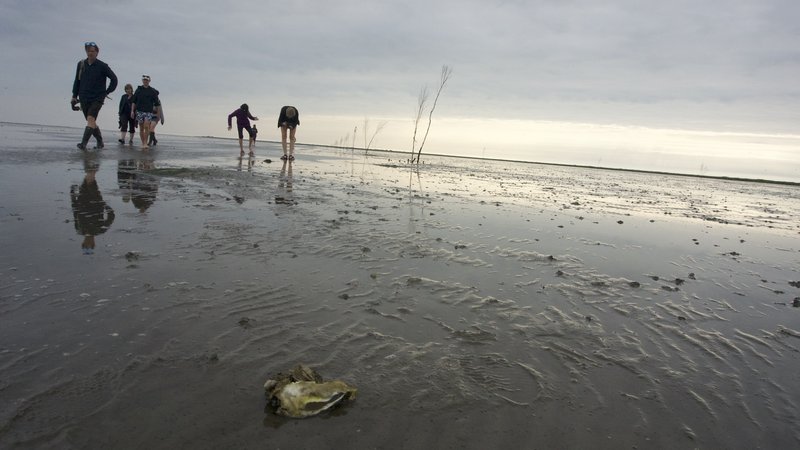
In 2020 I happened to appreciate much more than ever the contact with the nature. Although the spreading of the pandemic we were not subjected to restrictions as for how to spend our time outdoor. We were instead often encouraged to spend our time in the open air instead of lock ourselves home. Last summer was therefore an amazing time because it let us put the spotlight on exploring the nature. We experienced a pace quite unknown, we lived at a slower speed while enjoying the little things and being surprised at the wonder of the natural world, which we, perhaps, often give for granted. Among other experiences, I chose for today's blog post to tell you about the excursion I did in the national park Vadehavet (the Wadden Sea). It deals with a trip that you should definitely organise too. It could be an idea for your future holidays, if you live in Denmark, in accordance with the covid-19 restrictions. It could likewise be an option if you do not live in Denmark assuming that traveling for tourist reasons will be allowed. If not within summer 2021, just save the idea for another moment: the Vadehavet doesn't run away!
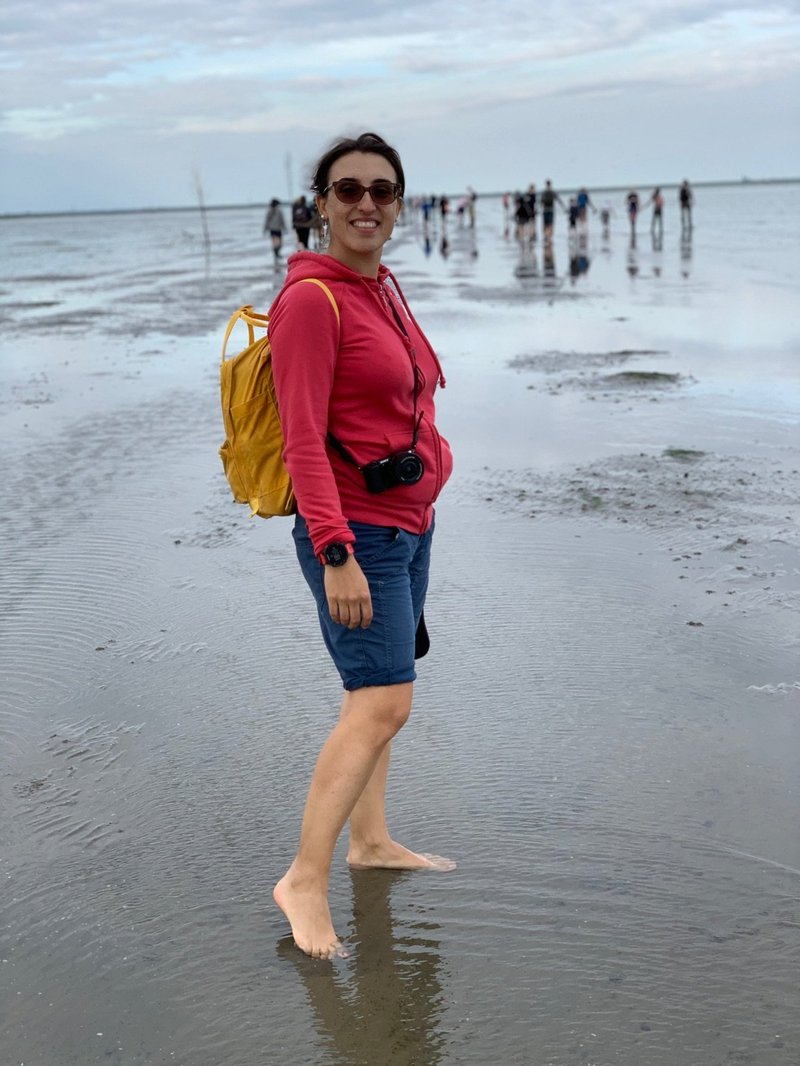
National park and unesco heritage
The Vadehavet is a coast line that stretches from Den Helder in the Netherlands to Esbjerg in Denmark as well as the result made from the meltwaters during the last ice age, namely the Weichselian glaciation, which ended around 9600 BC. Thanks to its 1459 km² the Vadehavet is the largest national park in Denmark (there are five in total). Nevertheless only 10% of the entire ecosystem is to be found here given that the park stretches further southwards along the German and Dutch coasts. Besides being designated national park in 2010, the Danish part of the Vadehavet was also listed as unesco world heritage in 2014. The decision was made after recognising the international importance of the swamp and tidal area as well as the dynamism of the ecosystem, which represents a vital source for flora and fauna. The Vadehavet is actually a rest area for million migratory birds and a breeding area for birds, fish and sea mammals. Furtermore, the area boasts a rich cultural history as for land reclamation and dam construction.
The islands
There are five islands in the Danish part of the Vadehavet. Three out of them are populated since the Middle Ages. They all have got something unique to offer: from the villages with thatched-roof houses in Fanø island, to the almost totally uncontaminated landscape in Mandø, and the large wild spaces in Rømo. However, Mandø island holds a surprise given that it is reachable only during periods of low tide.
The tides
You'd better inform yourselves about the time of the tides in advance before you reach the island. According to the local guide I met in Mandø, people usually drive to the island thanks to the low tide and are not able able to drive back though if not until the following tide. This is a consequence of not being aware of the ecosystem's nature. Most of the seabed dries out two times within an average of 24 hours. The difference in height between the low and the high tide is 1,8 meters in some places. "Vadehavet" means exactly "the sea" (havet) "whose seabed dries out during the low tide" (vade). I recommend you to always contact a guide with expertise since the tides can change accordingly to the weather and the area requires a deep knowledge of the local conditions. You will enjoy an amazing experience this way without unpleasant surprises.
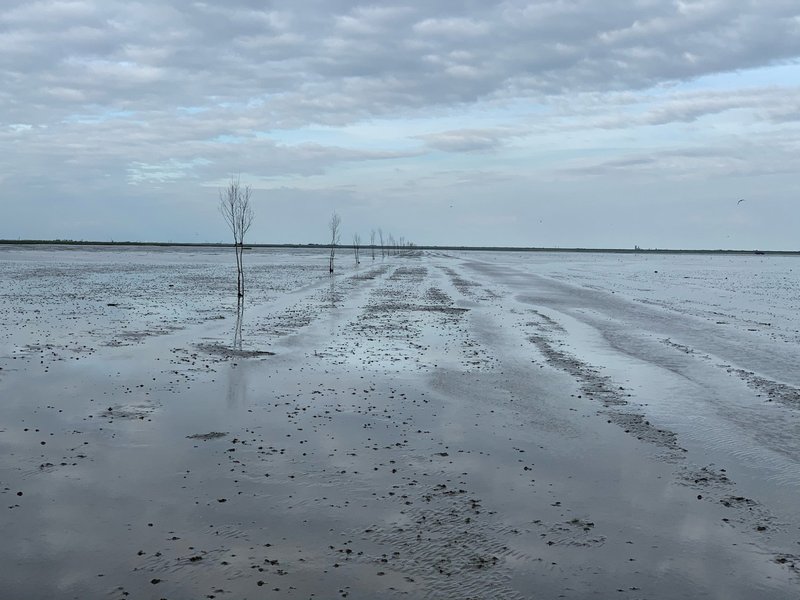
Low tide between Mandø island and the mainland.
Flora and fauna
Mandø is rich in wild herbs and flowers as well as native animals. Among the others it is possible to spot migratory birds such as the red knot, the grey plover and the curlew, and nesting birds such as the western marsh harrier, the arctic tern and lots of anatids just like the gadwall, the northern shoveler, and the widgeon. You will also find lots of blue mussels, sandworms (they pretend they are dead during the low tide so not to be eaten by other animals), grey seals, brown shrimps, plaice, crab and herring. Last but not least, you will see many sheep grazing. In Mandø you will find the common sea-lavender which you will easily recognise thanks to its distinctive blue-violet colour. The flora and fauna that you will be able to see in the island change according to the season. As a matter of fact you will be able to experience different excursions depending on when in the year you visit the national park.
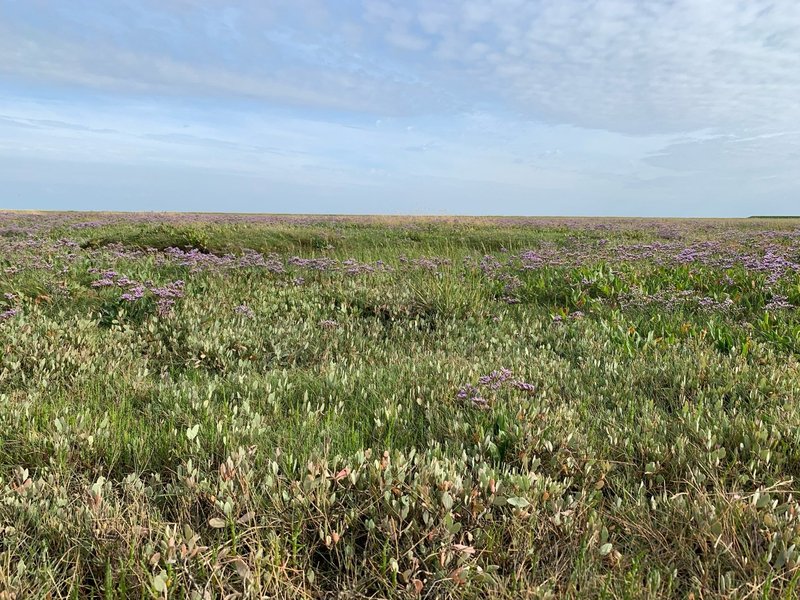
The common sea-lavender, one of the wild flowers in Mandø.
My experience
I am going to tell you how I organised my exploration in the island so that it can be of inspiration for you. The road that connects the island to the mainland is called Låningsvejen and it is 7 km long. The easiest way to cross it is aboard a tractor-bus, which leaves from Vadehavetscenter in the countryside of Ribe. I stayed at a splendid location in Ribe within walking distance from the magnificente cathedral. And I explored the surroundings on a bicycle that I rented at Danhostel. On the day of the excursion to Mandø I reached the Vadehavetscenter on two wheels. 10 km of beautiful landscape, which I would have easily done in less than half an hour, but the strong wind and the mistaken sand tracks made me late. Do not be deceived by the side paths, just continue along the main road and leave well in advance! I made it to the tractor-bus 30 seconds before the excursion started. We were a group of approximately fourty people in total: all Danes except for me and my travel mates. This was a clear sign of the pandemic 'cause that bus would have otherwise been crowded with many other nationalities. The naturalistic guide was a biologist with expertise about the local flora and fauna. As we reached the island, we got off the bus and enjoyed the path back to the mainland by taking advantage of the low tide. I walked barefoot on the seabad. The water was warm as well as the air temperature. It was July and the weather conditions were very pleasant.
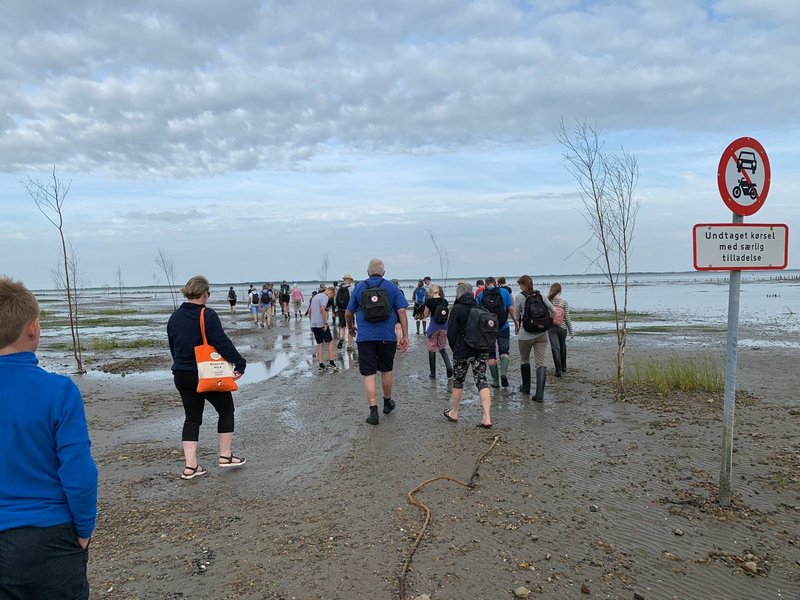
Practical information
If you wish to reach Mandø on a tractor-bus, book in advance the tickets and possibly the bicycle to move around. A Spasso con Elena will be happy to plan the itinerary and provide reservations for you. You are welcome to contact us to know further. I recommend you to check the forecast so to get dressed accordingly. My advice for a summer trip is to wear shorts (the water level increases as you walk along the naturalistic path) or, even better, those hiking pants that you can modify in lenght. What else? A t-shirt, a sweater, a lightweight waterproof jacket and a cap. I recommend to take off your shoes and enjoy completely the contact with the sea by walking barefoot. However, there are lots of mussels in some places, which can hurt your feet. Therefore, I would take along a pair of rock/cliff shoes to wear in case you need. Do not forget to bring water, snacks and your camera. This excursion is suitable for all ages as long as you are able to walk well. You will not have to run, but you will have to hurry since there is a limited time during which the tide is low. It is for sure an awesome experience for kids. If you wish to take your dog along, you will have to keep it on a leash besides reading carefully all the rules that applies.
Useful links
You find lots of information on the Vadehavet's official webpage www.nationalparkvadehavet.dk (just choose English if you do not understand Danish)
If you wish to sleep under the stars in one of the many shelters scattered in the wild nature, check this page www.udinaturen.dk.
You can check the tides on the Danish weather institute's page www.dmi.dk.
